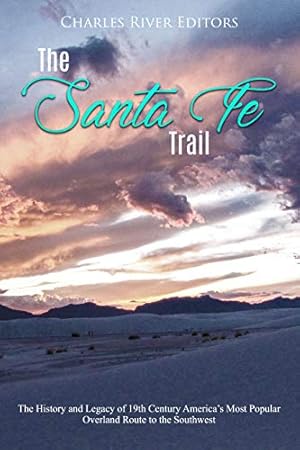Description
*Includes pictures
*Includes a bibliography for further reading
*Includes a table of contents
The Lewis and Clark Expedition, notwithstanding its merits as a feat of exploration, was also the first tentative claim on the vast interior and the western seaboard of North America by the United States. It set in motion the great movement west that began almost immediately with the first commercial overland expedition funded by John Jacob Astor's Pacific Fur Company and would continue with the establishment of the Oregon Trail and California Trail.
The westward movement of Americans in the 19th century was one of the largest and most consequential migrations in history, and as it so happened, the paths were being formalized and coming into use right around the time gold was discovered in the lands that became California in January 1848. Located thousands of miles away from the country's power centers on the East Coast at the time, the announcement came a month before the Mexican-American War had ended, and among the very few Americans that were near the region at the time, many of them were Army soldiers who were participating in the war and garrisoned there. San Francisco was still best known for being a Spanish military and missionary outpost during the colonial era, and only a few hundred called it home. Mexico's independence, and its possession of those lands, had come only a generation earlier.
Everything changed almost literally overnight. While the Mexican-American War technically concluded with a treaty in February 1848, the announcement brought an influx of an estimated 90,000 "Forty-Niners" to the region in 1849, hailing from other parts of America and even as far away as Asia. All told, an estimated 300,000 people would come to California over the next few years, as men dangerously trekked thousands of miles in hopes of making a fortune, and in a span of months, San Francisco's population exploded, making it one of the first mining boomtowns to truly spring up in the West. This was a pattern that would repeat itself across the West anytime a mineral discovery was made, from the Southwest and Tombstone to the Dakotas and Deadwood.
At the same time, the journey itself was fraught with risk. It's easy for people with modern transportation to comfortably reminisce about the West, but many pioneers discovered that the traveling came with various kinds of obstacles and danger, including bitter weather, potentially deadly illnesses, and hostile Native Americans, not to mention an unforgiving landscape that famous American explorer Stephen Long deemed "unfit for human habitation." 19th century Americans were all too happy and eager for the transcontinental railroad to help speed their passage west and render overland paths obsolete.
One early trail got its start in Independence, Missouri, one of many cities marked as starting points for pioneers, settlers, or traders. From there, the trail went all the way to Santa Fe, which at that time was part of the newly independent country of Mexico. As Americans pushed steadily west along the frontier and the Mexican-American War was fought, both ends of the trail became part of the United States, and the Santa Fe Trail then connected with other trails that continued on to Mexico. From 1822-1880, the trail remained the prominent method of transportation until the railroads reached Santa Fe, ending the widespread use of a route that once connected two countries.
The Santa Fe Trail: The History and Legacy of 19th Century America's Most Popular Overland Route to the Southwest examines how the path was forged, the people most responsible for it, and the most famous events associated with the trail's history. Along with pictures depicting important people, places, and events, you will learn about the Santa Fe Trail like never before.
Tag This Book
This Book Has Been Tagged
Our Recommendation
Notify Me When The Price...
Log In to track this book on eReaderIQ.
Track These Authors
Log In to track Charles River Editors on eReaderIQ.

